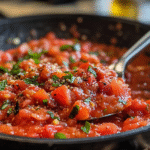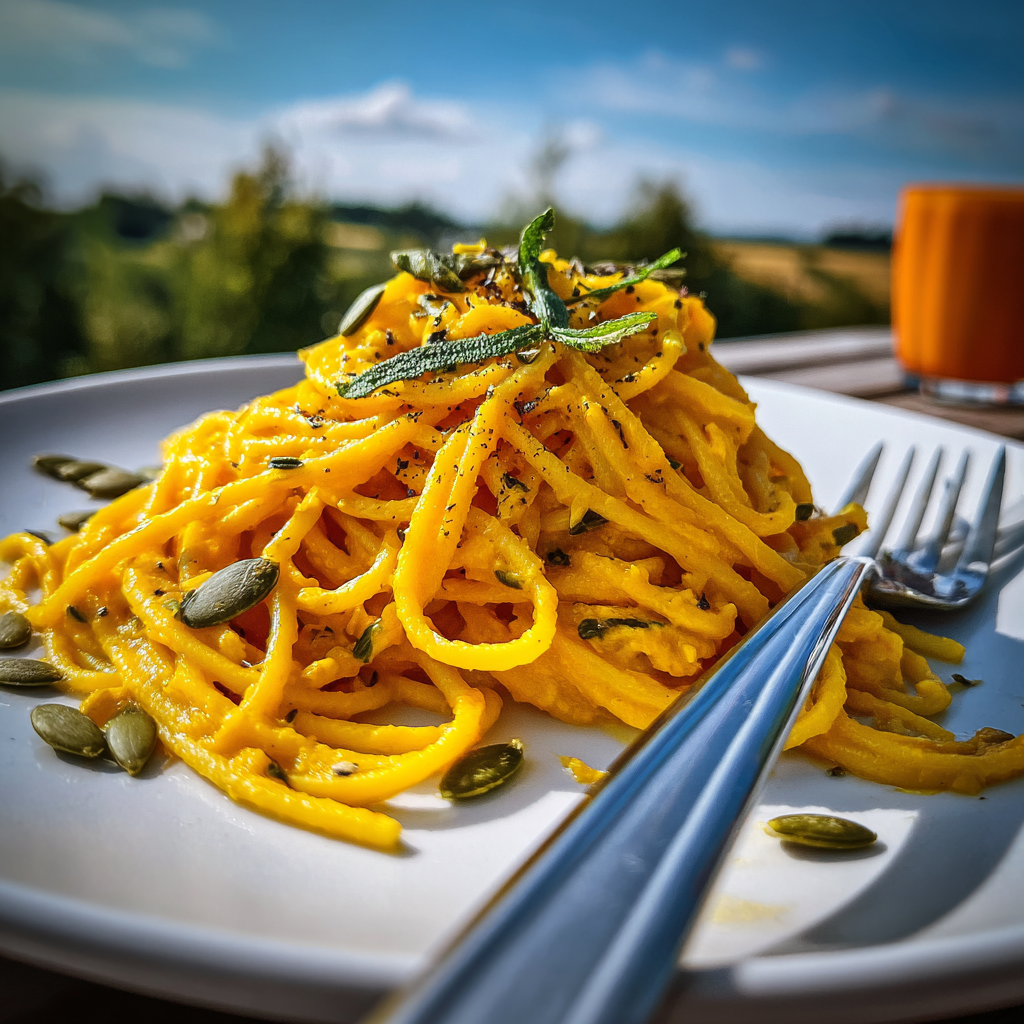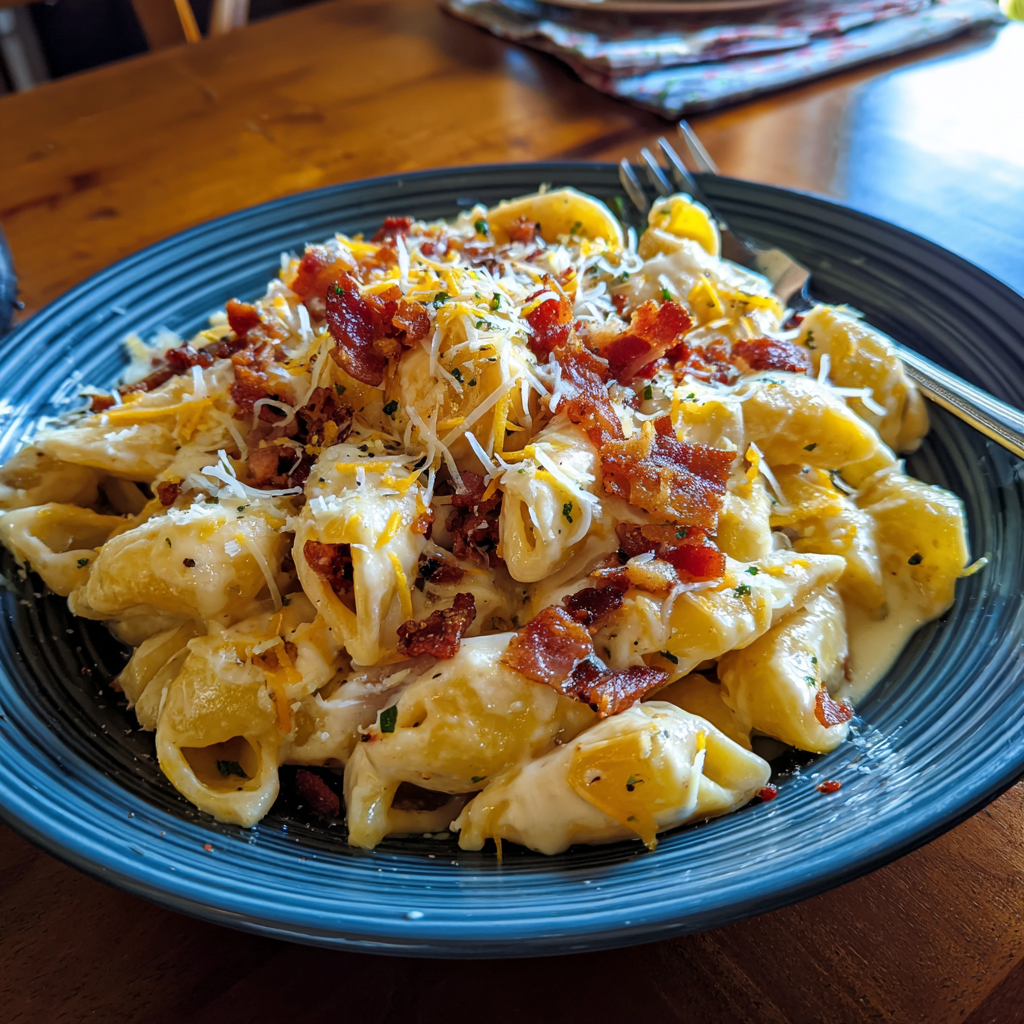Fresh tomato basil sauce has a special place in my heart, much like the memories of my childhood spent in my grandmother’s kitchen. As a young girl, I would often find myself perched on a stool, watching in awe as she transformed simple ingredients into something magical. The aroma of simmering tomatoes mixed with fragrant basil would fill the air, creating an inviting atmosphere that made my stomach rumble with anticipation. It was during one of those summer afternoons, while we were surrounded by baskets of ripe tomatoes from her garden, that I first learned how to make this delicious sauce. Little did I know, this would become a cherished recipe in my family, passed down through generations.

What makes this fresh tomato basil marinara sauce truly special is its simplicity. Unlike many store-bought sauces filled with preservatives and artificial flavors, this recipe celebrates the natural sweetness of fresh tomatoes and the aromatic essence of basil. The first time I made it on my own, I was surprised by how easy it was to recreate that same beloved taste. All it took was a handful of fresh ingredients and a bit of patience as I watched the sauce bubble and thicken. The satisfaction of creating something so delicious from scratch was exhilarating, and I couldn’t help but share it with my family. As they gathered around the dinner table, I felt a profound connection to my grandmother, knowing that I was continuing her culinary legacy.
The Story Behind This Recipe
This fresh tomato basil marinara sauce is a testament to the power of home cooking. Many families are looking for quick dinner solutions, especially on busy weeknights, and this recipe delivers without sacrificing flavor or quality. In about 30 minutes, you can have a homemade sauce that pairs perfectly with pasta, pizza, or as a base for countless other dishes. The best part? You can customize it to suit your tastes! Whether you prefer it spicy with a hint of red pepper flakes or sweet with a dash of sugar, this sauce can adapt to whatever you’re in the mood for.
Seasonally, this dish shines particularly bright during the summer months when tomatoes are at their peak. Visiting local farmers’ markets becomes a ritual where I search for the ripest, juiciest tomatoes to use in my sauce, often chatting with vendors about their growing practices. There’s something inherently satisfying about cooking with in-season ingredients, as they offer the best flavor and nutrition. And let’s not forget the emotional connection that comes with preparing a family recipe; it’s a beautiful way to honor the past while creating new memories.
In this guide, you will learn not only how to prepare a delectable fresh tomato basil marinara sauce but also the stories and cultural significance behind it. From tips on selecting the best tomatoes to what to pair with your sauce, I promise you’ll find everything you need to impress your family and friends. Cooking is more than just a task; it’s an opportunity to connect with loved ones, share stories around the dinner table, and create lasting memories. So let’s dive in and discover the magic of fresh tomato basil sauce together!
The Rich History and Cultural Significance of fresh tomato basil
The history of fresh tomato basil sauce is rich and varied, stemming from a blend of culinary traditions that have evolved over centuries. While it might seem like a modern creation, the roots of this beloved sauce can be traced back to the late 18th century in Italy, where tomatoes were first introduced from the Americas. Initially met with skepticism, tomatoes gradually became a staple in Italian cuisine, especially in the southern regions where the climate was perfect for growing these vibrant, juicy fruits.
Origins and History
The combination of tomatoes and basil is a classic pairing that has stood the test of time. In Naples, the birthplace of marinara sauce, local cooks would simmer fresh tomatoes, garlic, and basil to create a sauce that complemented the region’s famous pasta dishes. It was a humble dish, made with simple ingredients that were readily available, embodying the essence of Italian cooking: using what you have to create something extraordinary. Over time, variations of this sauce spread across Italy and beyond, each region adding its unique twist based on local ingredients and preferences.
As Italian immigrants made their way to America in the late 19th and early 20th centuries, they brought their culinary traditions with them, including the cherished fresh tomato basil sauce. In the United States, it quickly gained popularity, becoming a staple in Italian-American households. Today, you can find countless variations of marinara sauce, from chunky versions filled with vegetables to smooth and silky sauces that serve as the perfect pasta companion.
Cultural Significance
This sauce is more than just a delicious condiment; it represents a cultural bridge that connects generations and communities. In Italy, marinara sauce is often associated with family gatherings and festive occasions. It’s a dish that brings people together, whether it’s a casual Sunday dinner or a grand celebration. In many homes, the recipe is passed down through generations, with each family adding their personal touch. Sharing this sauce with loved ones is a way to honor tradition while creating new memories.
Famous chefs and renowned restaurants have also played a significant role in popularizing fresh tomato basil sauce. Icons like Marcella Hazan and Lidia Bastianich have showcased this classic recipe in their cookbooks and television shows, elevating it to a beloved dish in many kitchens across the world. Their approaches often emphasize the importance of high-quality ingredients, encouraging home cooks to seek out the freshest tomatoes and basil available.
Nutritional Benefits
In addition to its cultural significance, fresh tomato basil sauce is packed with nutritional benefits that make it a health-conscious choice for families. Tomatoes are rich in vitamins C and K, potassium, and folate, while basil offers anti-inflammatory properties and is a source of antioxidants. Together, these ingredients create a sauce that not only tastes good but is also good for you. The best part is that by making your own sauce, you can control the ingredients, ensuring that it’s free from artificial additives and excess sugars.
In conclusion, the fresh tomato basil sauce is a culinary gem that carries with it a rich history and cultural significance. Its roots in Italian tradition and its evolution in American kitchens have made it a beloved staple for many families. By embracing this recipe, you’re not only enjoying a delicious dish but also connecting with a legacy that spans generations. So, gather your ingredients, roll up your sleeves, and let’s celebrate the beauty of homemade marinara sauce!
Essential Ingredients for Perfect fresh tomato basil
When it comes to crafting the perfect fresh tomato basil marinara sauce, the foundation lies in the quality of your ingredients. Each component plays a vital role in developing the rich, vibrant flavors that define this classic Italian sauce. Let’s dive into the essential ingredients that will elevate your marinara from ordinary to extraordinary.
Print
Fresh Tomato Basil Marinara Sauce Recipe – Complete Guide
Ingredients
- 4 pounds ripe tomatoes
- 1 tablespoon extra-virgin olive oil
- 4 large cloves garlic, minced
- 1 bunch fresh herbs, such as basil, or a combo of basil, parsley, oregano, and/or thyme
- 1 tablespoon sugar
- ½ teaspoon salt
- Freshly ground black pepper
- ½ teaspoon balsamic vinegar
- Crushed red pepper flakes, to taste (optional)
- Additional fresh chopped herbs, to taste (optional)
Instructions
- Cut tomatoes into chunks. Using your hands, squeeze them into bits over a large, deep bowl or pot, including juices. (Alternatively, you may pulse them a few times in a food processor.) Set aside.
- In a large pot set over low heat, sauté minced garlic in olive oil until softened and fragrant. Add tomatoes and juices to pot, place fresh herb bunch on top, raise heat to medium, and bring to a simmer. Reduce heat to low, cover pot, and simmer for 30 minutes, stirring occasionally.
- When sauce has thickened and reduced, remove herb stems. Stir in sugar, salt, pepper, and balsamic vinegar. Taste and adjust seasonings. If desired, add crushed red pepper flakes and additional fresh chopped herbs. Use an immersion blender or food mill to slightly puree sauce. (Or you may allow sauce to cool and pulse it in batches in a food processor. Do not over-process…a bit of texture should remain.) Serve warm or allow to slightly cool and store in a container or jar in the refrigerator for up to a week.
Essential Ingredients
- Fresh Tomatoes (2 pounds) – The star of your sauce! Choose ripe, in-season tomatoes like Roma or San Marzano for their rich flavor and low moisture content.
- Fresh Basil (1 cup, packed) – This aromatic herb adds a fragrant sweetness to your sauce. Look for vibrant green leaves without any browning or wilting.
- Garlic (4 cloves) – Fresh garlic adds depth and a slight spiciness. Opt for firm cloves with no signs of sprouting.
- Onion (1 medium, yellow or white) – This ingredient provides a natural sweetness when sautéed, balancing the acidity of the tomatoes.
- Olive Oil (2 tablespoons) – A good quality extra virgin olive oil is essential for sautéing and adds a rich flavor. Look for a bottle labeled “first cold press” for the best quality.
- Salt (to taste) – Enhances all the flavors in your sauce. Sea salt is preferred for its mineral content and flavor.
- Black Pepper (to taste) – Freshly ground black pepper adds warmth and complexity. Avoid pre-ground for the best flavor.
- Red Pepper Flakes (optional, 1 teaspoon) – For those who enjoy a little heat, red pepper flakes can add a nice kick to your sauce.
- Parmesan Cheese (for serving) – Grated fresh Parmesan cheese is a wonderful finishing touch that adds nutty richness to your dish.
Each of these ingredients contributes uniquely to your fresh tomato basil sauce. The tomatoes provide the base flavor, while the basil infuses the sauce with a fresh, aromatic quality. Garlic and onion deepen the flavor profile, and olive oil adds richness. Salt and pepper enhance every ingredient, ensuring a balanced taste. Optional red pepper flakes can introduce a delightful spiciness for those who prefer a little heat.
Shopping Tips
When you’re on the hunt for the best ingredients, consider visiting local farmers’ markets, especially during the summer months when tomatoes are at their peak. Look for tomatoes that are firm but yield slightly to pressure, indicating ripeness. The color should be vibrant, with no blemishes or soft spots. For basil, select leaves that are bright green and fragrant; wilted or brown leaves indicate age and loss of flavor.
If you’re opting for store-bought ingredients, aim for organic options when possible. Organic tomatoes tend to have better flavor and fewer pesticides, which is essential for a dish like marinara where the tomatoes are the star. Remember, the quality of your ingredients directly impacts the quality of your sauce.
Substitutions and Alternatives
Not everyone has access to fresh ingredients year-round, but don’t despair! Canned tomatoes can be a great substitute when fresh tomatoes aren’t available. Look for high-quality canned San Marzano tomatoes for the best flavor. If you’re dealing with dietary restrictions, you can easily adapt the recipe. For a lower-sodium version, use less salt or a salt substitute. If you’re avoiding gluten, ensure that any additional ingredients or garnishes, like Parmesan cheese, are gluten-free.
When it comes to basil, if you can’t find fresh basil, consider using dried basil. However, use it sparingly; dried herbs are more concentrated than fresh. You can also experiment with other herbs like oregano or thyme for a different flavor profile. Just remember, fresh herbs should always be added towards the end of the cooking process to preserve their flavor.
For storage, fresh tomatoes should be kept at room temperature away from direct sunlight. Once cut, they can be refrigerated but should be used within a few days for the best flavor. Fresh basil can be stored in a glass of water like a bouquet or wrapped in a damp paper towel and placed in a plastic bag in the fridge. Garlic and onions should be stored in a cool, dry place, while olive oil should be kept in a dark, cool cupboard to maintain its quality.
In conclusion, creating an exceptional fresh tomato basil marinara sauce begins with sourcing the best ingredients. By selecting high-quality, seasonal components and understanding their roles in the recipe, you’ll set the stage for a delicious homemade sauce that you can be proud to share with family and friends.
Detailed Step-by-Step fresh tomato basil Cooking Instructions
Now that you have your ingredients ready, let’s walk through the detailed steps to create a mouthwatering fresh tomato basil marinara sauce. This process not only involves cooking but also the art of balancing flavors and textures. With a cooking time of just 30 minutes, you’ll have a fresh sauce that can elevate any dish.
Preparation Steps
- Mise En Place: Start by gathering all your ingredients and tools. You’ll need a cutting board, a sharp knife, a large pot or saucepan, a wooden spoon, and a ladle for serving.
- Chop the Vegetables: Dice the onion and mince the garlic. Make sure to keep the garlic and onion separate to avoid burning the garlic while sautéing. If you’re using fresh tomatoes, wash them and chop them into quartered pieces.
- Prep the Basil: Rinse the fresh basil leaves under cold water and pat them dry. Stack the leaves, roll them tightly, and slice them into thin ribbons (a technique known as chiffonade).
Preparation is key in cooking, as it allows for a smooth process. Having everything prepped and ready means you won’t be scrambling to chop while your ingredients are cooking.
Cooking Process
- Heat the Olive Oil: In your pot, heat the olive oil over medium heat. Once the oil is shimmering, it’s ready for the next step. This is where the aroma starts to build!
- Sauté the Onion: Add the diced onion to the pot. Sauté for about 5-7 minutes until the onion is translucent and fragrant. Stir occasionally to ensure even cooking.
- Add the Garlic: Once the onions are soft, add the minced garlic. Cook for an additional 1-2 minutes, stirring frequently to prevent burning. You want to release the fragrant oils without browning the garlic too much.
- Incorporate the Tomatoes: Now, add your chopped fresh tomatoes to the pot. Stir everything together, allowing the tomatoes to break down. This process should take about 10-15 minutes. You’ll notice the sauce starting to thicken and bubble.
- Season the Sauce: Add salt, black pepper, and red pepper flakes if using. Taste and adjust the seasoning as needed. Remember, it’s easier to add more seasoning than to take it away!
- Simmer: Reduce the heat to low and let the sauce simmer for another 10 minutes. This allows all the flavors to meld beautifully. Stir occasionally to prevent sticking.
- Add Fresh Basil: Just a few minutes before you’re ready to serve, stir in the fresh basil. This will keep its vibrant flavor and color, giving your sauce that fresh, authentic taste.
Final Assembly
- Check Consistency: If the sauce is too thick, add a splash of water or vegetable broth to loosen it up. For a thicker sauce, let it simmer a bit longer.
- Serve and Garnish: Ladle the sauce over your favorite pasta, or use it as a base for pizza or lasagna. Finish with a sprinkle of freshly grated Parmesan cheese and a few extra basil leaves for garnish.
- Storage: If you have leftovers, let the sauce cool completely before transferring it to an airtight container. It can be refrigerated for up to a week or frozen for future meals.
As you can see, making a fresh tomato basil marinara sauce is not just about following a recipe; it’s about engaging with the ingredients and understanding how they work together. With attention to detail and a bit of love, you can create a sauce that not only tastes fantastic but also warms the heart. Enjoy your culinary journey and share your delicious creations with loved ones!
Professional Tips and Techniques for fresh tomato basil
When it comes to creating the perfect fresh tomato basil marinara sauce, every detail matters. This sauce is not just a recipe; it’s a canvas for culinary creativity, a testament to the beauty of simplicity, and a direct connection to the heart of Italian cooking. Let’s dive deep into professional tips and techniques that will elevate your fresh tomato basil sauce to restaurant-quality standards.
Professional Techniques
To start, one of the most critical elements in making a stellar fresh tomato basil sauce is the selection of your tomatoes. Fresh, ripe tomatoes are essential, so consider heirloom varieties for their rich flavor and vibrant color. When you slice into a perfectly ripe tomato, the sweet aroma fills the air, a reminder of summer gardens bustling with life. Always aim to use tomatoes in season; they offer the best taste and texture. If you can find a farmer’s market in your area, that’s where you’ll find the freshest produce.
Another insider secret is the technique of blanching your tomatoes. Before you chop them, score the bottom of each tomato with an ‘X’ and briefly immerse them in boiling water. This process makes peeling the tomatoes a breeze. As you peel them, take a moment to admire the jewel-like flesh beneath the skin. This simple technique not only saves time but also enhances the sauce’s texture, allowing for a smoother finish.
When it comes to cooking, the method matters just as much as the ingredients. Sautéing garlic in olive oil until it’s just golden adds a depth of flavor that makes your fresh tomato basil sauce irresistible. Resist the urge to throw all your ingredients in at once. Start slowly, allowing each layer of flavor to develop. Think of it as a symphony; each ingredient plays its part, building to a harmonious whole.
Troubleshooting Guide
Even experienced cooks can run into hiccups while making fresh tomato basil sauce. If your sauce turns out too watery, it could be due to the tomatoes you used. In this case, a simple fix is to simmer the sauce longer to allow excess moisture to evaporate. You can also add a pinch of tomato paste to thicken it up. Remember, cooking is all about adjustments; don’t be afraid to experiment!

Another common issue is a sauce that lacks depth or flavor. If this happens, try adding a splash of red wine or a teaspoon of sugar to balance the acidity of the tomatoes. The sweet notes of basil will play off the acidity beautifully. If the sauce feels flat, a sprinkle of salt can work wonders, unlocking the flavors hidden within the tomatoes.
Presentation Tips
Presentation is key when serving your fresh tomato basil sauce. Consider the vessel you use: a rustic bowl or a sleek white plate can set the tone for your dish. When plating, drizzle a little extra virgin olive oil on top for a glossy finish, and garnish with fresh basil leaves. The vibrant green against the red sauce is visually stunning and adds an aromatic punch to the dish.
For an elegant touch, serve your sauce with freshly made pasta, twirled into a nest. The way the sauce clings to the pasta, combined with a sprinkle of freshly grated Parmesan, creates a dish that is not only delicious but also a feast for the eyes. Pair your meal with a light-bodied red wine, like Chianti or a Sangiovese, which complements the fresh tomato basil flavors beautifully.
Lastly, if you’re planning to make your sauce ahead of time, consider preparing a double batch. Fresh tomato basil sauce freezes well, allowing you to enjoy the taste of summer even in the depths of winter. Just be sure to let it cool completely before transferring it to airtight containers. When you’re ready to use it, simply thaw and reheat, bringing a taste of summer back to your kitchen.
Creative Variations and Adaptations of fresh tomato basil
As you embark on your culinary journey with fresh tomato basil sauce, you’ll discover that the possibilities are endless. This sauce is versatile, allowing for creative variations and adaptations that can suit any palate or occasion. Let’s explore these exciting options together!
Seasonal Variations
While fresh tomato basil sauce shines in the summer when tomatoes are at their peak, consider seasonal variations that can add a delightful twist to your dish. In the fall, for instance, you can incorporate roasted squash or pumpkin into your sauce, creating a warm, hearty flavor profile. The sweetness of the squash pairs beautifully with the acidity of the tomatoes, making for a comforting dish as the weather cools.
Springtime brings an opportunity to brighten your sauce with asparagus or fresh peas. Lightly sauté these vegetables before adding them to your sauce for an elegant touch that enhances both flavor and color. The vibrant green of asparagus against the rich red of the sauce will be a showstopper on any dinner table.
Dietary Adaptations
In today’s world, dietary preferences and restrictions are more varied than ever. Luckily, fresh tomato basil sauce can easily adapt to accommodate different lifestyles. For those on a keto diet, consider utilizing zucchini noodles instead of traditional pasta. This not only keeps the dish low-carb but adds a fresh crunch that complements the sauce perfectly.
For vegan friends, the sauce is naturally plant-based, but you can enhance its richness by adding nutritional yeast instead of cheese. It provides a cheesy flavor without the dairy, ensuring everyone can enjoy the dish. If gluten-free is a must, simply swap out regular pasta for gluten-free alternatives, and you’ll have a meal that everyone can savor without worry.
Creative Twists
Feeling adventurous? Let’s explore some international fusion variations of fresh tomato basil sauce. Why not turn it into a spicy arrabbiata sauce by adding red pepper flakes? The kick will elevate the dish, making it a new favorite for those who enjoy heat. Alternatively, infuse your sauce with herbs like oregano and thyme for a Mediterranean twist that adds depth and complexity.
For those who enjoy a smoky flavor, try incorporating roasted red peppers or even a bit of chipotle. This addition creates a sauce that’s both unique and tantalizing. You can also experiment with different cooking methods. Instead of the traditional stovetop, how about slow-cooking your sauce? This method allows the flavors to meld beautifully, creating an incredibly rich sauce that tastes like it’s been simmering all day.
Lastly, let’s not forget about leftovers! If you find yourself with extra sauce, consider using it as a base for a hearty vegetable soup. Simply add your favorite vegetables, some broth, and let them simmer together. The result is a comforting and satisfying meal that’s entirely different from your original dish.
In conclusion, the world of fresh tomato basil sauce is filled with endless possibilities. By experimenting with seasonal ingredients, exploring dietary adaptations, and adding creative twists, you can make this classic sauce your own. So roll up your sleeves, gather your ingredients, and let your culinary imagination run wild!
Storage, Reheating, and Meal Prep for fresh tomato basil
When it comes to making a delicious fresh tomato basil marinara sauce, one of the best parts is enjoying the fruits of your labor long after you’ve made it. Proper storage, reheating, and meal prep techniques can make a world of difference in preserving the flavor and quality of your sauce. Let’s dive into the details of how to store your fresh tomato basil sauce, reheating methods that work best, and meal prep strategies that ensure you have this savory delight on hand whenever the craving hits.
Short-term Storage
After you’ve whipped up a batch of fresh tomato basil marinara sauce, it’s essential to store it properly if you plan to enjoy it within a few days. The refrigerator is your best friend for short-term storage. You’ll want to allow the sauce to cool to room temperature before transferring it to an airtight container. Glass jars or food-safe plastic containers with tight-fitting lids work best, as they prevent air from entering and keep your sauce fresh.
When storing, always remember to label your containers with the date. Fresh tomato basil sauce can typically last in the refrigerator for about 3 to 5 days. However, to ensure maximum quality, it’s best enjoyed within the first few days. This time frame allows the flavors to meld beautifully, but the freshness of those vibrant tomatoes and aromatic basil is best appreciated sooner rather than later.

Freezing and Long-term Storage
If you’re like me, you often make a larger batch of fresh tomato basil sauce to have on hand for those busy weeknights. Freezing is a fantastic way to extend the life of your sauce. When done correctly, frozen marinara can last for up to 6 months without losing its deliciousness. To freeze, start by cooling the sauce completely and then portion it into freezer-safe containers or resealable plastic bags. I like to divide mine into meal-sized portions, which makes it easy to grab just what I need.
When using bags, remember to squeeze out as much air as possible before sealing. This helps prevent freezer burn and keeps your sauce tasting fresh. Alternatively, you can use ice cube trays to freeze smaller portions, which is perfect for adding a quick burst of flavor to pasta or soups. Once frozen, transfer the cubes to a larger freezer bag and label them with the date.
For long-term storage, you might consider adding a splash of olive oil on top of the sauce in your container. This can help create a barrier against air and maintain the sauce’s vibrant color and flavor. When you’re ready to use your frozen sauce, simply thaw it overnight in the refrigerator or use the defrost setting on your microwave.
Reheating Best Practices
Reheating your fresh tomato basil sauce should be approached with care to ensure that the flavors remain intact and the sauce doesn’t become overly watery. The best method is to reheat it slowly on the stovetop over low to medium heat. Stir occasionally to prevent sticking and to help evenly distribute the heat. If your sauce thickens too much during reheating, a splash of water, broth, or even a bit of olive oil can help restore its desired consistency.
If you’re in a hurry, the microwave can also work, but be sure to use a microwave-safe container and cover it to prevent splattering. Heat in short intervals, stirring in between, until the sauce is heated through. Another tip I’ve found useful is to add a few fresh basil leaves during reheating. This not only revives the fresh flavor but also imparts a lovely aroma that makes your kitchen feel like a cozy Italian trattoria.
As you navigate through storing and reheating your fresh tomato basil marinara sauce, food safety is paramount. Always check for signs of spoilage, such as an off smell or unusual appearance, especially if you’ve stored it for a while. Following these guidelines will help you enjoy your sauce safely and deliciously, whether it’s a quick weeknight dinner or a comforting weekend feast.
In conclusion, with the right storage and reheating methods, your fresh tomato basil marinara sauce can be a delightful staple in your kitchen. From enjoying it fresh off the stove to savoring it weeks later, it’s all about keeping that burst of flavor alive!
Nutritional Benefits and Health Information
When you indulge in a bowl of fresh tomato basil marinara sauce, you’re not just treating your taste buds; you’re also providing your body with a wealth of nutritional benefits. Understanding the nutritional components of this sauce can enhance your appreciation for the dish and help you make informed dietary choices.
Nutritional Profile
The primary ingredients in fresh tomato basil marinara sauce—fresh tomatoes, basil, garlic, and olive oil—bring a variety of nutrients to the table. A standard serving of marinara sauce (about half a cup) typically contains:
- Calories: Approximately 70-100 calories
- Carbohydrates: 12-15 grams
- Protein: 2-3 grams
- Fat: 3-7 grams (depending on the amount of olive oil used)
- Fiber: 2-3 grams
- Sugars: 3-5 grams (natural sugars from tomatoes)
This nutritional breakdown makes fresh tomato basil sauce a relatively low-calorie option, especially when compared to creamy sauces. It offers a healthy dose of vitamins and minerals while serving as a flavorful addition to various dishes.
Health Benefits
Fresh tomatoes are the star ingredient in marinara sauce and are packed with health benefits. They are rich in lycopene, an antioxidant that has been linked to a reduced risk of chronic diseases, including heart disease and certain cancers. Lycopene is even more concentrated in cooked tomatoes, making your marinara sauce a superfood!
Basil is not just a fragrant herb; it also offers numerous health benefits. It contains essential oils that possess anti-inflammatory and antibacterial properties. Additionally, basil is rich in vitamin K, which is crucial for bone health, and antioxidants that help combat oxidative stress in the body.
Garlic, another key ingredient, is well-known for its health benefits. It contains compounds like allicin, which may help lower blood pressure and cholesterol levels. Plus, garlic is celebrated for its immune-boosting properties, making your sauce not only delicious but also beneficial to your health.
Dietary Considerations
Fresh tomato basil marinara sauce is a versatile option that fits into various dietary plans. Whether you’re following a vegetarian, vegan, Mediterranean, or even a gluten-free diet, this sauce is a perfect addition. It’s naturally gluten-free, but if you’re pairing it with pasta, be sure to opt for gluten-free pasta if that’s a dietary requirement.
For those watching their calorie intake, fresh tomato basil marinara sauce is an excellent choice. Its low-calorie count allows it to be incorporated into lighter meals without compromising flavor. If you’re looking to reduce the fat content, simply use less olive oil when preparing the sauce or opt for a dash of vegetable broth for added moisture during cooking.
In addition, this sauce can easily be modified to suit various tastes. For a lower-carb option, serve it over spiralized vegetables instead of traditional pasta. You can add extra veggies, such as bell peppers or zucchini, to increase the nutritional value without adding many calories. The beauty of fresh tomato basil marinara sauce is its adaptability, allowing you to cater to your dietary preferences and needs.
In summary, the fresh tomato basil marinara sauce is not only a delightful culinary creation but also a powerhouse of nutrients that can fit into many dietary lifestyles. With its numerous health benefits and versatility, it’s a dish worth celebrating in your kitchen!
Frequently Asked Questions About Fresh Tomato Basil
How can I make homemade marinara sauce with fresh tomatoes to freeze?
To make homemade marinara sauce with fresh tomatoes for freezing, start by selecting ripe, flavorful tomatoes, such as Roma or San Marzano. Begin by blanching the tomatoes in boiling water for about 30 seconds, then plunge them into ice water to easily peel off the skins. Sauté garlic and onions in olive oil until fragrant, then add the diced tomatoes along with fresh basil, salt, and a pinch of sugar to balance the acidity. Simmer for about 30 minutes until thickened, and then let the sauce cool completely before pouring it into airtight containers or freezer bags, leaving some space for expansion. Remember to label each container with the date for easy identification later!
What is a Sicilian marinara sauce recipe using fresh tomatoes?
A traditional Sicilian marinara sauce recipe typically includes fresh tomatoes, garlic, and a variety of herbs and spices. Start by dicing about 2 pounds of ripe tomatoes and sautéing them with 4 minced garlic cloves in olive oil until the tomatoes break down. Add a teaspoon of dried oregano, a pinch of red pepper flakes for heat, and a handful of fresh basil for authenticity. Allow the sauce to simmer gently for about 20-30 minutes, stirring occasionally, until it reaches your desired consistency. For a unique twist, consider adding capers or olives for a distinctive Sicilian flavor!
How do I make tomato sauce from fresh tomatoes?
To make tomato sauce from fresh tomatoes, begin by selecting high-quality, ripe tomatoes, preferably Roma or beefsteak, which have a higher flesh-to-seed ratio. Start by washing and coring the tomatoes, then cut them into quarters and cook them in a large pot over medium heat with a splash of olive oil. Stir occasionally, allowing them to break down and release their juices, which usually takes about 15-20 minutes. Once the tomatoes are soft, pass them through a food mill or blender for a smooth texture, then season with salt, pepper, and fresh herbs like basil or oregano. Simmer the sauce for an additional 20 minutes to deepen the flavors, and you can store or use it immediately!
What is the recipe for authentic Italian marinara sauce?
For an authentic Italian marinara sauce, you’ll need just a few high-quality ingredients: ripe tomatoes, extra virgin olive oil, fresh garlic, and basil. Start by heating about ¼ cup of olive oil in a saucepan and adding 2-3 crushed garlic cloves, cooking them gently until golden but not burnt. Add 2 pounds of peeled and diced tomatoes (fresh or canned) along with a pinch of salt and let the sauce simmer uncovered for about 20-30 minutes to develop rich flavors. Near the end of cooking, stir in fresh basil leaves for a burst of flavor. Serve it over pasta, or use it as a base for your favorite Italian dishes!
Conclusion: Mastering the Perfect fresh tomato basil
Creating the perfect fresh tomato basil is more than just following a recipe—it’s about understanding the techniques, ingredients, and cultural significance behind this beloved dish. Throughout this comprehensive guide, we’ve explored everything from the historical origins to modern variations, ensuring you have all the knowledge needed to make this recipe your own.





